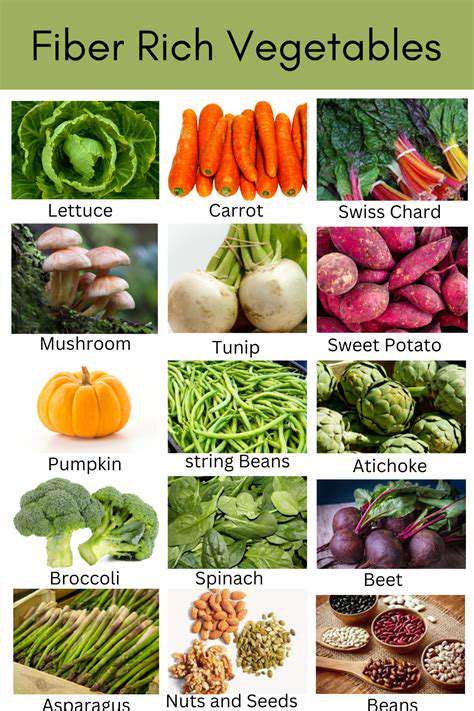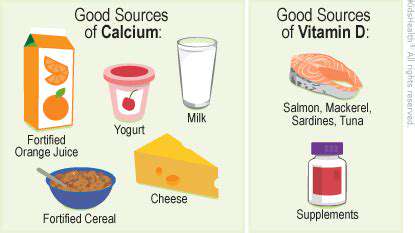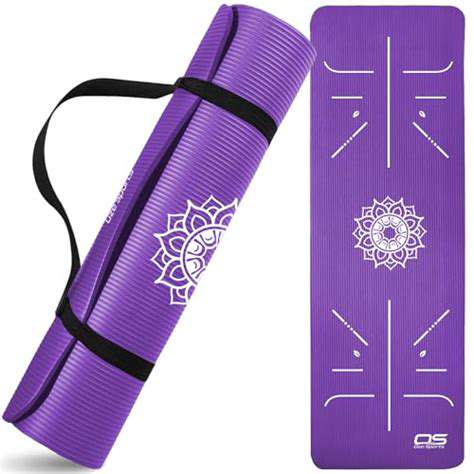Guide to the Importance of Fiber in Your Diet
Fiber's Role in Digestion
While many focus on protein or carbs, fiber quietly performs essential functions in our digestive system. Unlike other nutrients, it remains largely undigested as it moves through our intestines. This unique property is what gives fiber its remarkable health benefits. Soluble fiber, for example, absorbs water to form a gel that slows digestion. This gradual process helps stabilize blood sugar and creates lasting fullness, making it valuable for weight control. It also prevents uncomfortable digestive issues like constipation.
Insoluble fiber works differently by adding bulk to stool, facilitating easier bowel movements. Together, these fibers maintain digestive harmony. Regular fiber intake dramatically lowers the risk of diverticulosis, where problematic pouches develop in the digestive tract. The importance of fiber for gut health simply can't be ignored.
Beyond Digestion: The Wider Impact of Fiber
Fiber's benefits reach much further than just digestion. Numerous studies link high-fiber diets to reduced chronic disease risks. One significant benefit is cholesterol reduction, which directly impacts heart health. The same blood sugar regulation that aids digestion also helps prevent type 2 diabetes by slowing sugar absorption into the bloodstream.
Fiber-rich foods naturally contain vital nutrients like vitamins, minerals, and antioxidants. The colorful fruits, vegetables, and whole grains that provide fiber also deliver these health-boosting compounds. Making fiber a dietary priority offers comprehensive health advantages that extend well beyond your digestive system.
Regular fiber consumption supports gut health, reduces chronic disease risks, and enhances overall wellness. It aids weight management while stabilizing blood sugar levels. The advantages of including fiber in daily meals are both immediate and long-lasting.
Fiber's cholesterol-lowering effect occurs as it binds to cholesterol molecules for removal from the body. This process makes it a powerful ally against cardiovascular disease. Additionally, fiber's satiety-promoting qualities naturally help control calorie intake for weight management.
The variety of fiber sources - from crunchy vegetables to hearty whole grains - ensures you receive diverse nutrients along with your fiber. This nutritional synergy amplifies the health benefits of a fiber-rich diet.
Understanding fiber's multiple roles empowers better dietary choices with significant health payoffs. Its importance for digestive health and overall wellbeing remains unquestionable.
Fiber-Rich Foods: Delicious Choices for a Healthy Diet

Benefits of Fiber Intake
Foods packed with fiber form the foundation of digestive health. They ensure regularity while preventing uncomfortable constipation, significantly impacting daily comfort. Fiber's blood sugar regulation helps guard against type 2 diabetes. For weight management, fiber's satiety effect keeps hunger at bay longer after meals.
Fiber also contributes to heart health by lowering cholesterol levels. Research consistently shows that high-fiber diets correlate with reduced heart disease risk. It's nature's way to support cardiovascular wellness.
Dietary Sources of Fiber
Fiber appears in countless delicious foods across all food groups. Sweet options like berries, apples, and bananas make increasing fiber intake enjoyable. Nutrient-dense leafy greens including spinach and kale offer both fiber and essential vitamins.
Whole grain staples like brown rice, quinoa, and oats provide satisfying fiber bases for meals. Protein-packed legumes such as beans and lentils deliver substantial fiber along with plant-based protein. This diversity allows for creative, flavorful meals while meeting fiber needs.
Fiber and Digestive Health
Fiber acts as nature's digestive cleanser. Like an internal broom, it sweeps through the digestive tract promoting regular elimination. This prevents constipation and related discomfort. Balanced fiber intake also helps avoid diverticulitis and other digestive complications.
By regulating food transit time, fiber ensures optimal nutrient absorption. This creates more efficient digestion that supports whole-body health.
Fiber and Weight Management
Fiber serves as a natural appetite regulator. The prolonged fullness it provides helps control portions and resist cravings, simplifying weight maintenance. Since fiber digests slowly, it sustains satisfaction between meals.
Fiber-rich foods typically contain fewer calories by volume than processed alternatives. This means satisfying portions without excess calories, supporting weight goals. Fiber may also limit fat absorption, providing additional weight management benefits.
Fiber and Blood Sugar Control
Fiber moderates blood sugar by slowing carbohydrate absorption. This prevents energy spikes and crashes while reducing diabetes risk. For those monitoring blood sugar, fiber is an essential dietary component.
The gradual carbohydrate digestion promoted by fiber maintains steady energy levels. This helps prevent insulin resistance, making fiber particularly valuable for metabolic health.
Making Fiber a Staple in Your Daily Routine: Practical Tips
Understanding the Importance of Fiber
Though often underestimated, fiber represents a dietary cornerstone. Its benefits extend far beyond satiety to include digestion, blood sugar control, gut microbiome support, and weight management. Recognizing fiber's comprehensive benefits motivates its regular inclusion in meals.
Choosing the Right Types of Fiber
Fiber comes in two main varieties, each with distinct benefits. Soluble fiber from oats, legumes, and fruits helps manage cholesterol and blood sugar. Insoluble fiber from whole grains and vegetables promotes regularity. A mix of both types delivers complete digestive support.
Incorporating Fiber-Rich Foods
Boosting fiber intake doesn't require drastic diet overhauls. Simple swaps like choosing whole grain options make a difference. Leaving edible skins on fruits and vegetables maximizes fiber intake. Versatile legumes easily enhance various dishes while nuts and seeds offer convenient fiber-packed snacks.
Gradually Increasing Your Fiber Intake
Sudden fiber increases may cause temporary digestive discomfort. The solution is gradual incorporation - start with small portions of high-fiber foods, slowly increasing amounts. This gentle approach allows your system to adapt comfortably.
Managing Potential Side Effects
While generally beneficial, rapid fiber increases might cause bloating or gas. These effects typically diminish as your body adjusts. Drinking adequate water helps minimize discomfort. Persistent issues warrant medical consultation.
Making Fiber a Sustainable Habit
Successful fiber integration involves creating lasting habits. Meal planning, ingredient prep, and keeping fiber-rich snacks available simplify maintenance. Exploring new recipes with favorite ingredients makes the transition enjoyable. Consistent, long-term commitment unlocks fiber's full health potential.
Read more about Guide to the Importance of Fiber in Your Diet
Hot Recommendations
-
*Guide to Managing Gout Through Diet
-
*Best Habits for Financial Well being
-
*How to Build a Routine for Better Mental Health
-
*How to Eat Healthy on a Budget [Tips & Meal Ideas]
-
*Guide to Practicing Self Acceptance
-
*How to Incorporate More Movement Into Your Day
-
*Guide to Managing Chronic Pain Naturally
-
*Guide to Building a Reading Habit for Well being
-
*Top 5 Weight Loss Supplements That Actually Work
-
*Best Exercises for Postpartum Recovery [Beyond Abdominal Work]











